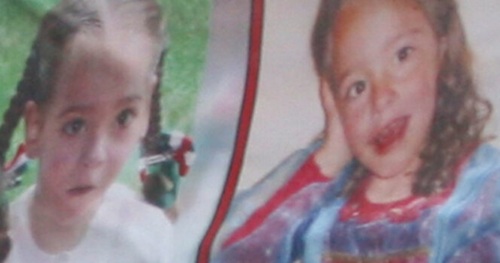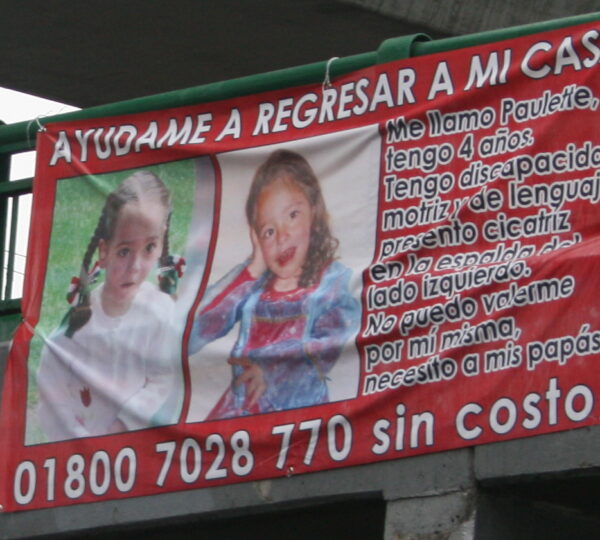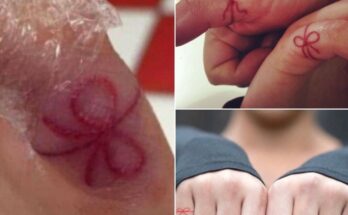
The disappearance and death of Paulette Gebara Farah remains one of Mexico’s most disturbing and controversial mysteries. The events of 2010, involving a four‑year‑old girl vanishing from her own bedroom and then being discovered dead — lodged in her own bed — drew national outrage, myriad theories, and a lingering sense of disbelief that has never fully been resolved. The Disappearance: The Night That Changed Everything.
On the night of March 21, 2010, Paulette returned home with her father and older sister from a weekend trip. Their apartment was located in Huixquilucan, in the State of Mexico, in a gated complex with security surveillance. Her mother, Lizette Farah, tucked Paulette and her sister into bed. Paulette, who had certain developmental disabilities affecting her speech and mobility, required care and supervision.
The following morning, when one of the family nannies, Erika, went in to wake Paulette, the child was nowhere to be found. Her bed was empty, no trace of her remained. Panic quickly spread through the household. The family and staff began searching, checked all rooms, closets, bathrooms, even the building itself — but there were no signs of forced entry, struggle, or any intrusion. Doors and windows were locked, security cameras revealed no one entering or exiting with Paulette, and surveillance footage showed no suspicious activity.
Because of Paulette’s disabilities, the concept that she had wandered away on her own seemed extremely unlikely. Officials and family members immediately launched a widespread search, involving police, volunteers, search dogs, social media campaigns, and broadcast appeals. Billboards, posters, TV spots, and newspaper coverage began to saturate the region. Lizette Farah appeared on live television, making emotional pleas for her daughter’s return, begging any person with information to come forward.
The Investigation, Suspicion, and Contradictions

Days passed. As the search dragged on, suspicion began to shift inward — toward those closest to the child. Just seven days after Paulette’s disappearance, authorities announced that both parents, Lizette Farah and Mauricio Gebara, as well as the two nannies — Erika and Martha Casimiro — would be placed under restriction orders (arraigo), accused of providing inconsistent statements. Attorney General Alberto Bazbaz publicly stated that each individual had, at times, falsified or altered their accounts, complicating the investigation.
The following day, the police undertook a reconstruction of the night Paulette went missing within the apartment. Blankets were laid out; forensic teams re-created the possible movements. Meanwhile, media scrutiny intensified, and public skepticism grew about whether those closest to the child had told the whole truth.
The Macabre Discovery: In the Very Room She Was Searched
On March 31, 2010 — nine days after Paulette’s disappearance — investigators made a discovery so shocking it stunned the country: Paulette’s body was found in her own bedroom, squeezed into the narrow gap between her mattress and the footboard or frame of the bed. She was wrapped in sheets and blankets, lying just where no one had thought to look deeply.
What made the discovery even more disturbing was that this was the same room in which her mother had conducted televised pleas, where search teams had already worked, and where search dogs had failed to detect anything. Some even claimed that people had slept in or used her bed during the search, yet still nobody saw or smelled anything until decomposition odor became intolerable.

In later leaked video footage from the investigation, at least one voice can be heard saying, “She was severely beaten,” as examiners inspected the stained sheets. But that statement was swiftly denied by Bazbaz, who insisted the case was not a homicide.
Autopsy and Official Findings: Accident or Something More?
An official autopsy and forensic report concluded the following:
-
Paulette had been placed to sleep nightly with an “orthopedic cloth” across her mouth (intended to keep her mouth closed).
-
The body showed no signs of post-death manipulation; the position in which she was found was believed to reflect her final position.
-
She had eaten roughly five hours before her death.
-
The autopsy found minor bruising on her left elbow and knee but no conclusive evidence of assault or sexual violence.
-
Toxicology tests were negative for drugs or sedatives.
-
Investigators ruled her death as accidental mechanical asphyxia, citing obstruction of nasal passages and thoraco‑abdominal compression — meaning she suffocated by being trapped in a confined space.
-
The timing of her death was estimated to lie between five and nine days prior to the body’s discovery.
-
Authorities contended she likely turned over in bed, slid or rolled into the narrow gap at the foot, and became trapped in such a way that rescue was impossible.
Bazbaz himself acknowledged that investigators had concentrated their search outside the home, overlooking places where Paulette might have remained inside her room.
Controversy, Outrage, and Unanswered Questions
The official version — that a child could go missing for nine days and be found in a space within her bed that had already been “searched” — inspired widespread skepticism and outrage. Many questioned how trained police dogs, forensic teams, and numerous people could have missed the body for so long, especially since search operations and media interviews had taken place in the same room.
The nannies, Erika and Martha Casimiro, publicly denied ever seeing Paulette in the gap. They claimed that they had thoroughly checked under beds, in closets, and behind furniture and had noticed no signs of a body. They argued it would have been impossible to miss the child in the space she was eventually found.
Critics and political figures also weighed in. Jesús Ortega, leader of the PRD, publicly questioned the thoroughness of the investigation:
“Who wants to protect whom—how did 100 police searching a 10‑square‑meter room fail to find her body?” he challenged.
The case forced the State Attorney General, Alberto Bazbaz, to resign months later amid growing criticism of the investigation’s integrity.
As for the body, in April 2010, Paulette was buried at Panteón Francés de San Joaquín in Mexico City. Years later, on May 3, 2017, her remains were exhumed and cremated, as authorities declared them no longer necessary for evidence in ongoing investigations. Meanwhile, Netflix dramatized the case in its 2020 series Crime Diaries: The Search (Historia de un crimen: La búsqueda), bringing renewed attention and debate to the baffling affair.
The case of Paulette Gebara Farah continues to defy consensus. While the official ruling labels her death as tragic and accidental, many remain unconvinced. The holes in the narrative — the body in a “searched” room, video interviews conducted in that same space, contradictory statements from caretakers, and the fact that multiple people used the bedroom during the search — spark ongoing speculation that the true story behind her death remains hidden.



